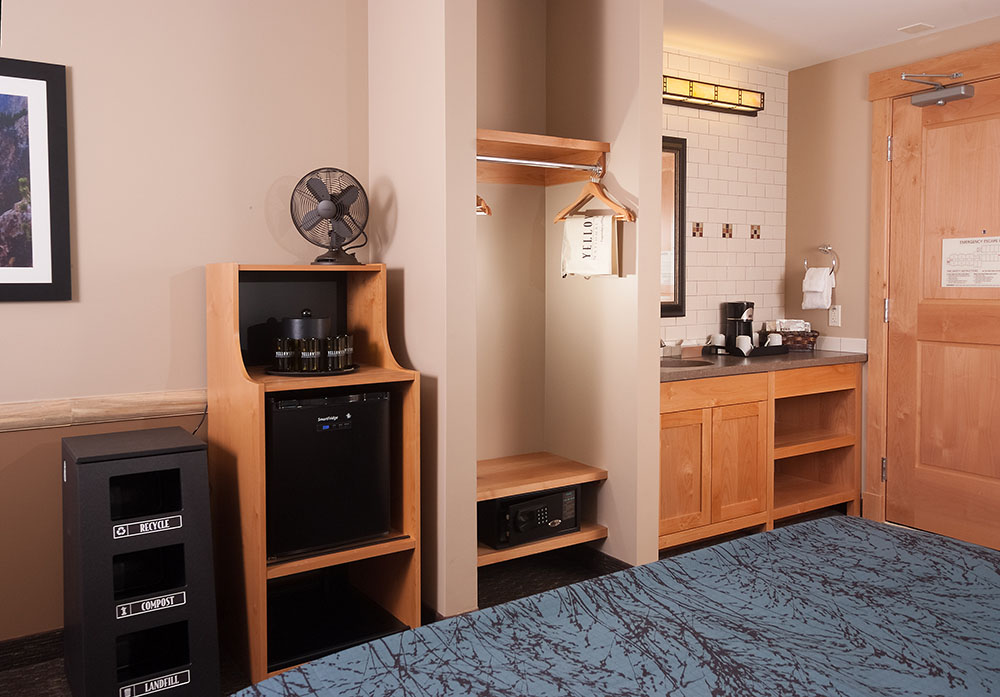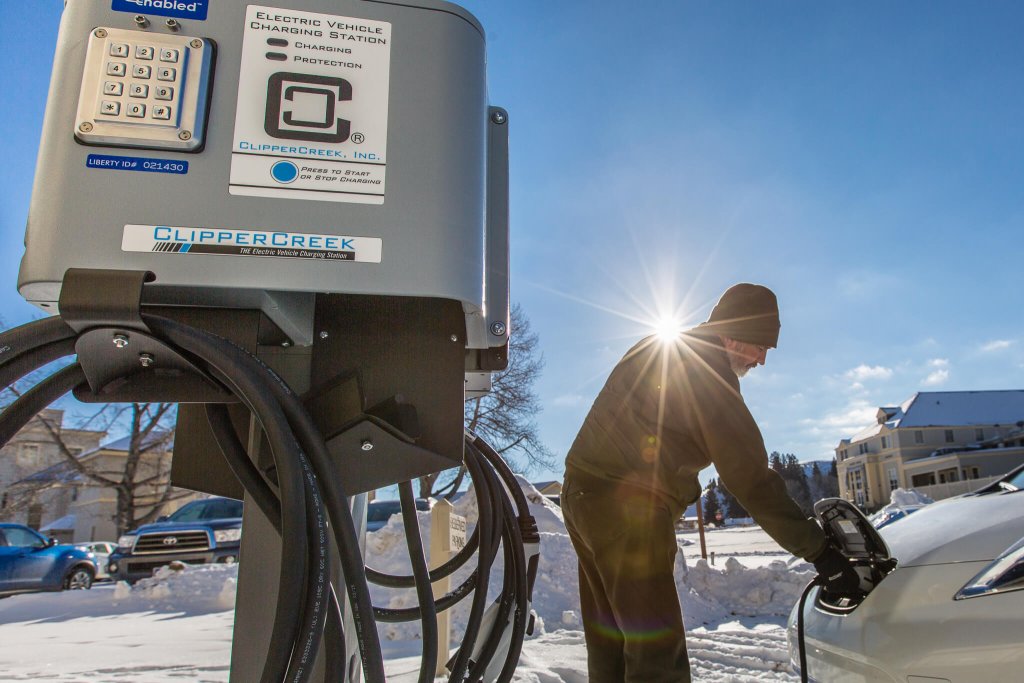Our nation’s most treasured lands are preserved for a reason, which is why making efforts toward keeping these areas around for future generations to enjoy is important. In Wyoming, both Yellowstone and Grand Teton national parks have rigorous sustainability efforts to make sure guests can continue to marvel at these natural areas without leaving too heavy of a footprint.
The national parks’ parent lodging companies – Xanterra for Yellowstone National Park and Vail Resorts for Grand Teton National Park – create and follow sustainability initiatives that span beyond their lodging and dining properties.
So how are sustainability efforts incorporated into the operations of Wyoming’s national parks? Their eco-friendly habits are similar to ours, but on a much bigger scale. Take a look at what national parks are doing to reduce their carbon footprint and how you can join these efforts when you visit.
Reduce Waste
In the Parks
One of the most effective ways to be environmentally friendly is to reduce the amount of waste produced. In Yellowstone National Park, bulk condiments are used at dining facilities, and park hotel room amenities such as shampoos and lotions are refillable. You might also notice that bar soaps aren’t individually wrapped like they are in most hotels and drinking glasses in rooms are made from repurposed wine bottles.

Both Yellowstone and Grand Teton national parks offer water stations throughout the park to prevent the need to purchase plastic water bottles. In fact, Yellowstone National Park completely stopped selling single-use plastic water bottles and have instead created a locally-produced aluminum canned water product. A portion of this products proceeds supports the park’s official non-profit partner, Yellowstone Forever. Each park also makes sure all single-use items in their restaurants – like utensils, cups, plates and to-go boxes – are biodegradable. Recently, Yellowstone replaced plastic straws with straws that are compostable.
Do Your Part
The parks make reducing your own waste simple. Instead of buying disposable water bottles, bring your favorite reusable water bottle and take advantage of refill stations in the park. While you’re at it, why not bring reusable food containers, utensils and bags, as well?
If you’re staying at a hotel, request for the cleaning service to not change sheets and towels every day. Hotels and lodging in the parks offer an incentive of $5 off your room stay per night if you opt to only have room service change linens and resupply towels after three days. If everyone did this, 300,000 gallons of water, 10,000 gallons of propane and 150,000 kWh electricity could be saved annually.
Recycle & Compost
In the Parks
While reducing waste is important, it’s difficult to not produce any waste at all. But what you do with that waste can make a huge difference. Grand Teton and Yellowstone national parks both recycle the same conventional items you do, including plastic, paper, glass and more; however, the parks take recycling one step further.

At Yellowstone, Xanterra recycles laundry bags, curtains, linens, manure, cooking oil and more. The manure? It’s provided to local agricultural businesses. And the cooking oil? It’s collected by a local business that converts it into biofuel.
In Grand Teton National Park, Vail Resorts also donates used cooking oil to local biodiesel users. Pre-consumer waste, such as uncooked vegetable oil and food prep waste like peels, stems and rinds from Jenny Lake Lodge and Jackson Lake Lodge are transported to two area farms to be used as compost or feed for chickens and pigs.
Do Your Part
While you might not have the resources to recycle all your leftovers, the parks make it convenient for you to continue conventional recycling efforts while on vacation. Recycle containers are located throughout both parks, and lodging within the parks offer trash recycling along with clear signage of what goes where. If you’re camping, be sure to bring extra bags so you can separate trash from recyclables.
Use Less Energy
In the Parks
Reducing your impact on the environment includes more than eliminating tangible waste. Minimizing energy use is also extremely important. At Yellowstone National Park, the lighting in all buildings – including chandeliers in historic buildings like the Roosevelt Lodge and Old Faithful Inn’s Old House rooms – are now energy-saving LED lights. Xanterra is continuously working to reduce gasoline usage by replacing engines on boats, using low pressure tire on snowcoaches, phasing out inefficient vehicles and more. They’ve even installed Electric Vehicle Charging stations for visitors using electric vehicles.

Similar efforts take place at Grand Teton National Park. This park also has a free shuttle system to help guests get around the park, creating one giant carpool system to help eliminate emissions.
Do Your Part
Leave your car parked at a visitor center and take advantage of the shuttle system offered at Grand Teton National Park. Better yet, leave your car in Jackson and use the town’s SMART But to get to the park. From there you should be able to rely on the shuttle system. If you’re staying at a hotel near either park, remember to turn your lights off when you leave and unplug any chargers that aren’t in use.
Be a Thoughtful Consumer
In the Parks
Doing your part to lessen your carbon footprint is one thing, but making a conscious decision to support other businesses doing the same brings conservation to the next level. At Yellowstone, Xanterra makes a number of thoughtful purchasing decisions; from pens to toilet paper, buying recycled and environmentally safe products is a priority. This includes buying from vendors who use reusable plastic pallets to ship products rather than wood pallets that tend to break and wind up in landfills.
Both Yellowstone and Grand Teton National Parks strive to sell durable, local products in gift shops. In park restaurants, food is local and includes cage-free eggs, organic produce, locally-raised beef and more. Parks pay close attention to make sure the food on their menus is responsibly harvested, non-GMO and free from hormones, antibiotics and other unnatural substances. Take a look at a menu to see these efforts labeled.
Do Your Part
When shopping both inside and outside of the national parks, be aware of where products came from. Look for tags that mark items organic or locally-produced, and watch for crafts made by local Native Americans. Also, be considerate of the quality of product you’re purchasing; it’s better to spend a little more on something of good quality than to buy something cheap that will likely wind up in a landfill within a year.
Follow the Rules
In the Parks
Rules in national parks are created not only to keep you safe, but also to protect the wildlife, vegetation and natural features of the parks. In Yellowstone and Grand Teton national parks, guidelines such as speed limit signs and clearly marked paths are put into place and enforced for both visitor safety and conservation efforts.
Do Your Part
The rules are clearly marked; all you need to do is follow them! Go the speed limit to protect wildlife on the road. Stay on trails to preserve flora and prevent erosion. Place trash in clearly marked garbage or recycling bins so it doesn’t blow off into the habitat of an area bear or bison. Keep a safe distance from wildlife, and leave your dog at home. You can find more responsible travel tips on our WY Responsibly page. Remember, national parks are federally-protected areas that need to be treated with care by all who are lucky enough to experience them.
Want to learn more about sustainability efforts in Yellowstone and Grand Teton national parks? This is just the tip of the iceberg. Learn more about sustainability efforts made by Xanterra in Yellowstone and Vail Resorts in Grand Teton.